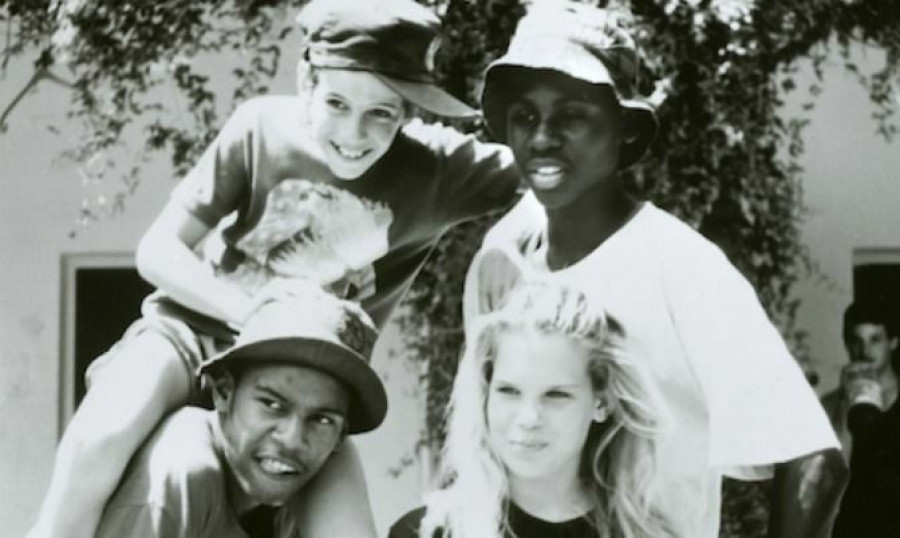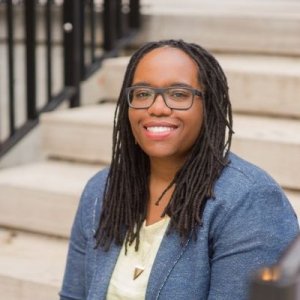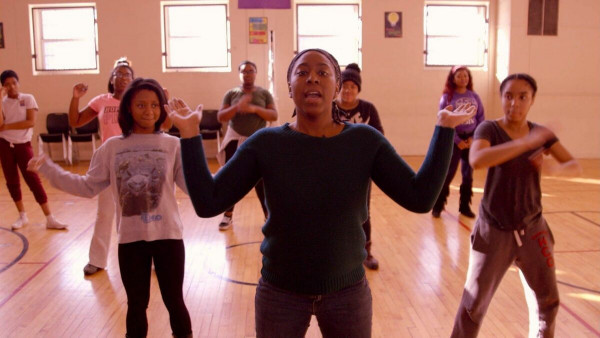Directed by Madeleine Ali, the film was the first ever screening at the Toronto Jewish Film Festival (TJFF) twenty-five years ago. Today, a film like this should feel like a blast from the past, and while the hairstyles and clothing certainly are, its message has stood the test of time.
Black to the Promised Land opens with whimsical introductions to each student (Renee, Tisha, Andrew, Nelson, Lovey, Michael, Corey, Cylinda, Israel, Theresa, and Rasean) and their families. In these scenes, the students’ voices serve to debunk media reports at the time about who they were, their school, and the purpose of the trip. As one student observes, “The New York Times was downgrading us instead of focusing on the trip; it was all about how ‘bad’ the students were.”
The New York Times originally ran a feature story on the students on March 4, 1989. Titled, “11 Students Set to Study On a Kibbutz,” the article explained that the students, from Bedford-Stuyvesant Street Academy High School, along with their science teacher, Stewart Bailer (who is Jewish), were set to embark on “an unusual learning experience” – a ten-week work trip to Israel near the northern border with Syria and Lebanon.
A few months later, New York Magazine described Bed-Stuy Street Academy as an “alternative high school” that took students who, “for intellectual or emotional or social reasons, do not adjust to regular public schools.” The students were also said to “come from broken homes and families who are on public assistance.”
The tone of the media’s reporting was largely about the depravity of the Brooklyn students. Black to the Promised Land, then, attempts to humanize the lives behind the headlines. Sure, most of the students are not doing well academically, which is why their teacher came up with the idea for the trip in the first place, but early on in the film we are reminded that despite the media’s story, this is ultimately a story about young people trying to find their way in life.
In the film’s early scenes, the camera captures the streets of Bed-Stuy, the milieu for which the eleven students will soon leave. We see children splashing through water from an open fire hydrant and other kids bouncing on discarded mattresses; drug deals are going down; homeless men are sleeping in the streets while police are combative with others in the same streets; and finally, the cityscape is filled with burnt out buildings. This is the Brooklyn of the 1980s.
Hip-hop is also a secondary character in the opening scenes of the film; specifically, the song “Back on the Block” frames the camera’s crosscuts of the daily realities of inner-city life. The song, featuring Big Daddy Kane, Ice-T, Kool Moe Dee, and Melle Mel, was the title track of legendary music producer Quincy Jones’ 1989 album. In his biography on Jones, Clarence Bernard Henry describes the song as having a special message (a social commentary) from Jones’s memory of a “dude” (a low-income African American male) located on the corner in every ghetto in America. Black in the Promised Land also uses this song for social commentary but with a slight twist – the setting is 5,700 miles away.
At first, you think this documentary is about the emotional whirlwind of black students traveling to Israel – removed from the urban streets of Bed-Stuy to the rural fields of a kibbutz – but soon after the students arrive in the Jewish state, you realize that the families and children in the kibbutz are the ones who have much to learn from their unfamiliar visitors.
If you’re not familiar with a kibbutz the film explains that in Hebrew, the term is used to describe a village or community. It is a name that denotes modesty, a voluntary democratic settlement where people live and work together (without competition) with the aim of generating economic and social equality among all members. In a kibbutz, work is divided equitably and decisions are made by the members collectively.
The people in the kibbutz in the film are, initially, ignorant about black people. “We thought all the black boys were basketball players,” says one kibbutz member early on, adding that this information was all that was presented to them on television. Further, they had been told that the students came from a high school “for” criminals.
Some of the early scenes in Israel make you wonder if the school had made the right decision. Should the students, as talk show host Bryant Gumbel asserted back in 1989, have gone to Africa instead? They complain about the isolation; they hate the food; they hate the work schedule (mornings begin at 6 am); and most importantly, they loathe the labour – they work in cotton fields (yes, black children travelled to Israel to pick cotton), on an assembly line in a factory, they fish, and they tend to turkeys.
By the film’s end, however, not only are the students transformed, so too are the kibbutz members’ opinions of their black visitors. They realize they had been lied to by the media. These kids are not criminals, nor are the stereotypes about black people true.
Black to the Promised Land is a warm and thoughtful documentary that reveals the universality of the human experience. While the kibbutz members misjudge their black visitors, the black students must rethink their beliefs about Israel, especially as it relates to the omnipotence of Israeli-Palestinian violence.
Twenty-five years later, Ali’s film is still relevant. The media continues to play a major role in shaping not only how we see ourselves, but more importantly, how others see us. Black to the Promised Land reminds us that it doesn’t matter where you come from or where you live we are all going through something, even in a kibbutz. Who knew black people and Jewish people had so much in common, especially in the Promised Land?
Black To The Promised Land plays Saturday 6 May, 1:00 PM at Alliance Francaise.

 By
By 








